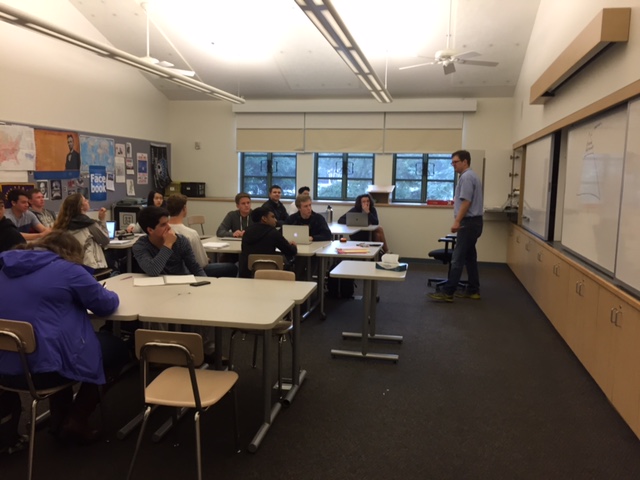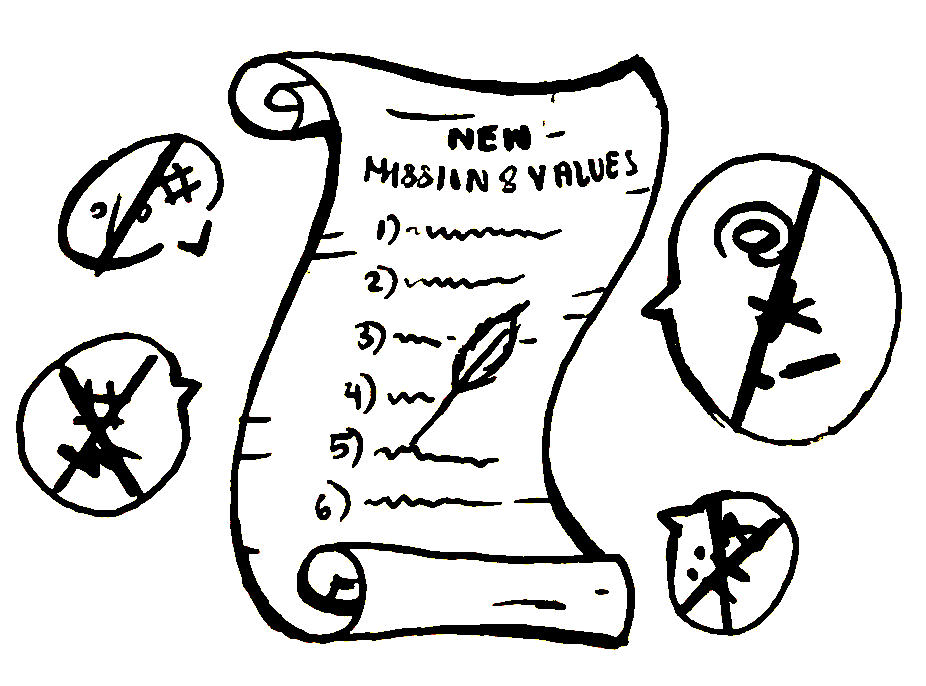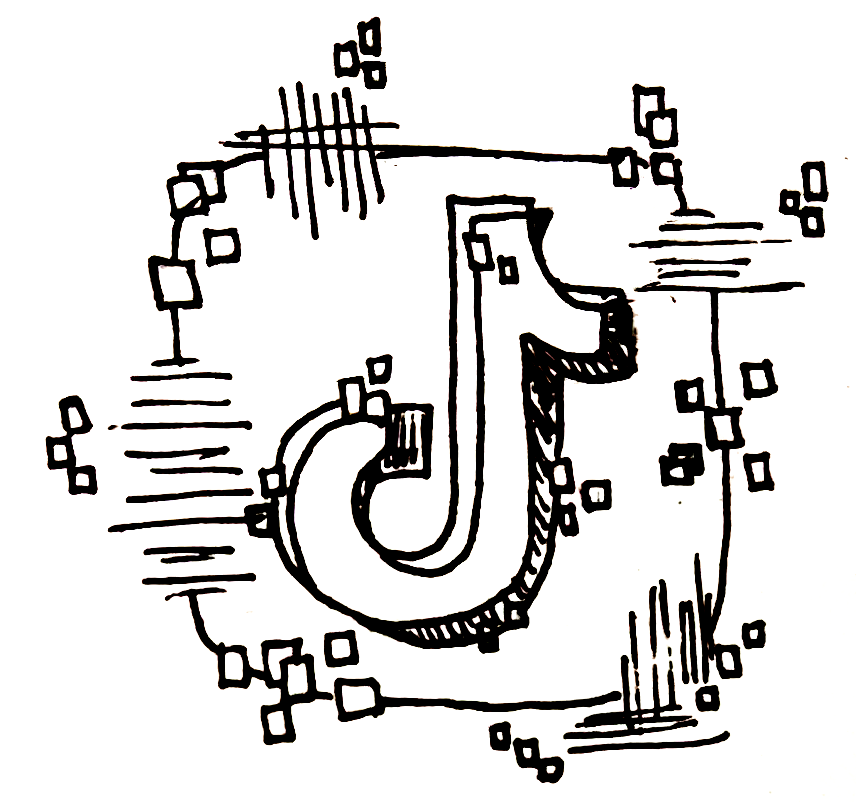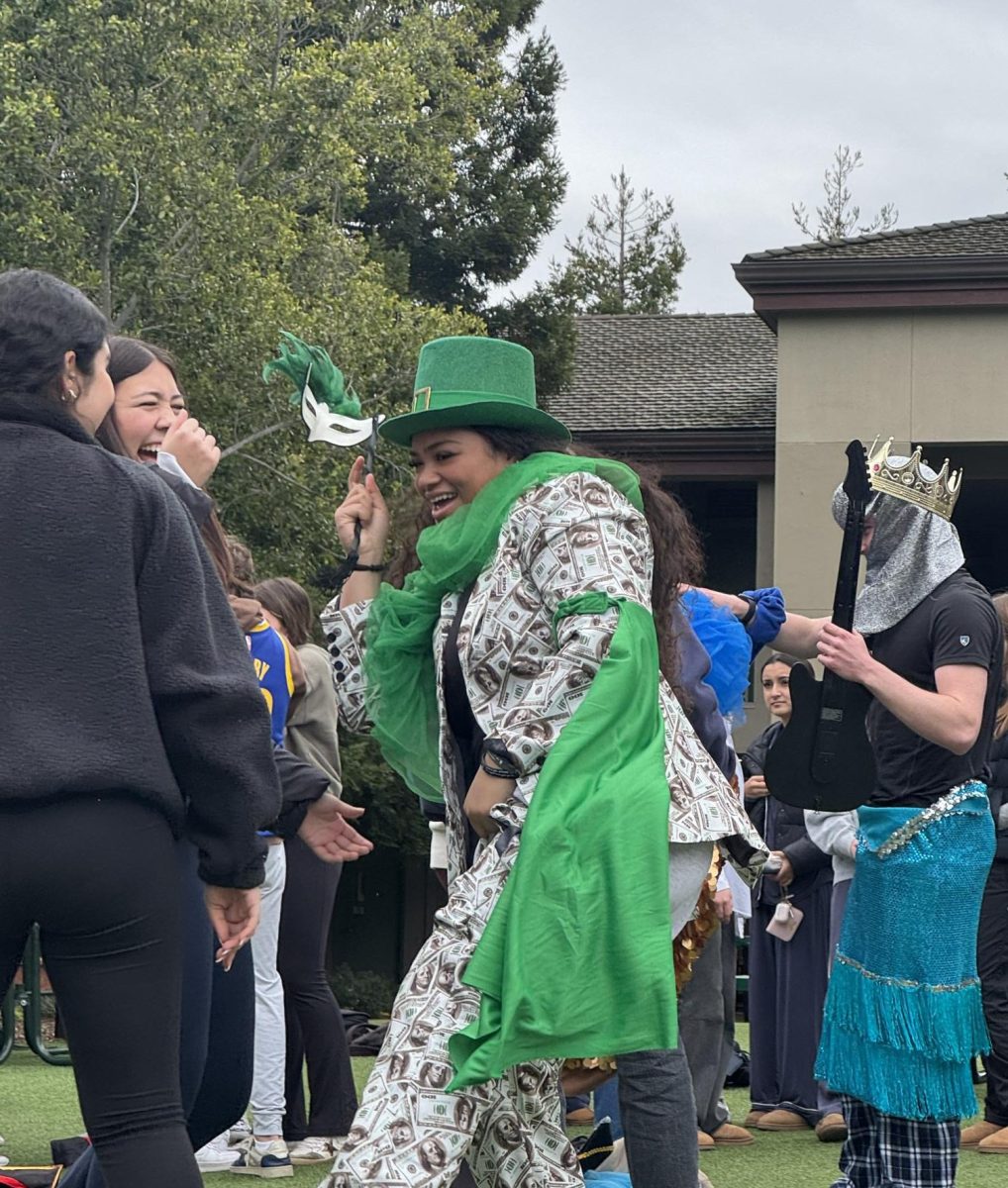Dr. Charles Hanson is incorporating case studies in the AP U.S. History curriculum to give practical examples of historical concepts. Staff photo by Eva Herr.
By Eva Herr
This past school year the two AP U.S History (APUSH) classes piloted a system in which the Harvard Business School method of using case studies in teaching is being applied to high school U.S. history classes. While there are improvements that could be made to these case studies, many students feel they were a helpful addition to the curriculum.
These cases come in a packet of around 25 pages, 20 pages of text and five pages of graphs, sources and citations. The case studies range from summaries of events in history to studying specific moments or situations that have larger implications in history. Thus far, the students have been given a total of four case studies which are assigned for homework over approximately two nights.
The case studies covered the topics of public education, Reconstruction, voting systems and political machines, and the Civil Rights Movement. Students then discuss the case in class using the Harvard Business School discussion method which includes cold calling. In the APUSH classes the teacher has name cards from which the teacher picks randomly to ensure that the each student gets selected once.
About a year ago there was a lot of press about a Harvard Business School professor who had found a way to adapt the case study method to use in an undergrad class and about 12 high schools were trying the case studies out at the high school level. Upper School Director John Schafer asked Charles Hanson, an AP Economics and APUSH teacher to go to a conference at Harvard Business School regarding the newly adopted US History case studies.
For many students this unique model of learning has allowed them to thrive by giving them a different medium for learning history outside of their teacher and the textbook. “[The case studies are] something the RUSH classes don’t do and it gives you a different perspective on the events than the textbook so you’re getting more of a world view on the topic rather than just one author and one teacher,” junior and APUSH student Katie Guardino said.
Hanson also recognizes the case studies’ ability to give teachers new information, allowing for a class based less upon a single teacher’s perspective or knowledge. “Teachers only teach about the things it occurs to them to teach about; it’s not like we all know it all […] The case studies helped your teachers learn. If something helps your teachers learn I think it’s pretty good,” Hanson said.
Because the case studies were often a specific look at an event in time rather than an overview, students felt it added an aspect to their learning that would be otherwise forgotten. “Too often, history classes have to cover so much material in too little time but with the case studies, it slowed things down a bit and allowed us to educate ourselves on just one thing,” junior and APUSH student Tiffany Tam said. “I learned a lot about the details that history textbooks sometimes gloss over and I was able to apply this knowledge on the tests and even in other classes.”
Junior and APUSH student Kate Barrett observed that the case study method works particularly well with the new schedule. “I think with the new schedule all of my classes including APUSH could feel a bit rushed at times, but the case studies enabled us to dive into a specific aspect of a unit we were covering and really expand our understanding,” Barrett said.
Hunter MacDonald, a junior and current APUSH student, also believes that the skills practiced in case studies will be applicable to college classes. “I thought [the case studies] further helped us learn the material in a context that we’d most likely see again in college which is only a couple of years away […] being given a case study that was written by a university, it’s something that we’ll most likely visit again and more realistic to what we’d learn and discuss in college,” MacDonald said.
While there were noted benefits to the case studies, some students were stressed by the cold-calling environment and found it difficult to read the long and dense case studies. “They were really long, really dense, and stressful because you knew you would be cold-called with questions in class,” junior and APUSH student Kelly Campa said.
The teachers have a different perspective on the cold-calling method as it encourages a dynamic classroom discussion and ensured everyone would participate. “The cold calling feature gets everybody in no matter what […] it is a way to regiment your classroom to facilitate discussion in a different way,” APUSH teacher Charles Wetherell said.
Although the format of the case studies was useful for the teachers both APUSH teachers agreed that the sources used in the case studies could be improved to include more narrative and applicable primary sources rather than business school-like data tables and charts which are hard for students to read. “If I were in charge of this thing I would change all the sources they give of data charts to actual primary sources […] I wish there were more interesting and dynamic primary sources to really enrich the discussion more,” Wetherell said.
For both APUSH teachers, the format of the case studies was a positive aspect of the program as the studies hinged on moments of decisions. “[The case studies] are trying to help you think about history as being made by real people who had to decide things. […] For the past 10 or 20 years […] a lot of history has been presented as inevitable,” Hanson said.
After this year the teachers hope to get feedback from students and decide how to incorporate them into next year’s curriculum. “I think that at minimum we might use the text as a homework reading instead of textbook,” Wetherell said.
Hanson agreed that he would like to keep the case studies in some capacity. “If it is up to me I would be reluctant to abolish them because just because on balance I think it has been worth it.” Hanson said. With the changes in the history department, specifically the shift of APUSH to becoming a sophomore class, the innovative U.S. History case studies may be used for an even younger group of students than ever before.








